Picking art for your home goes way beyond just filling up blank walls. It’s about building a connection between your space and your personality.
Remember to repin your favorite images!
When you pick wall art with intention, it can transform a room‘s energy, set the vibe for your décor, and become a focal point that really ties things together. The right artwork should complement your furniture, reflect your style, and boost the feeling of your living space.
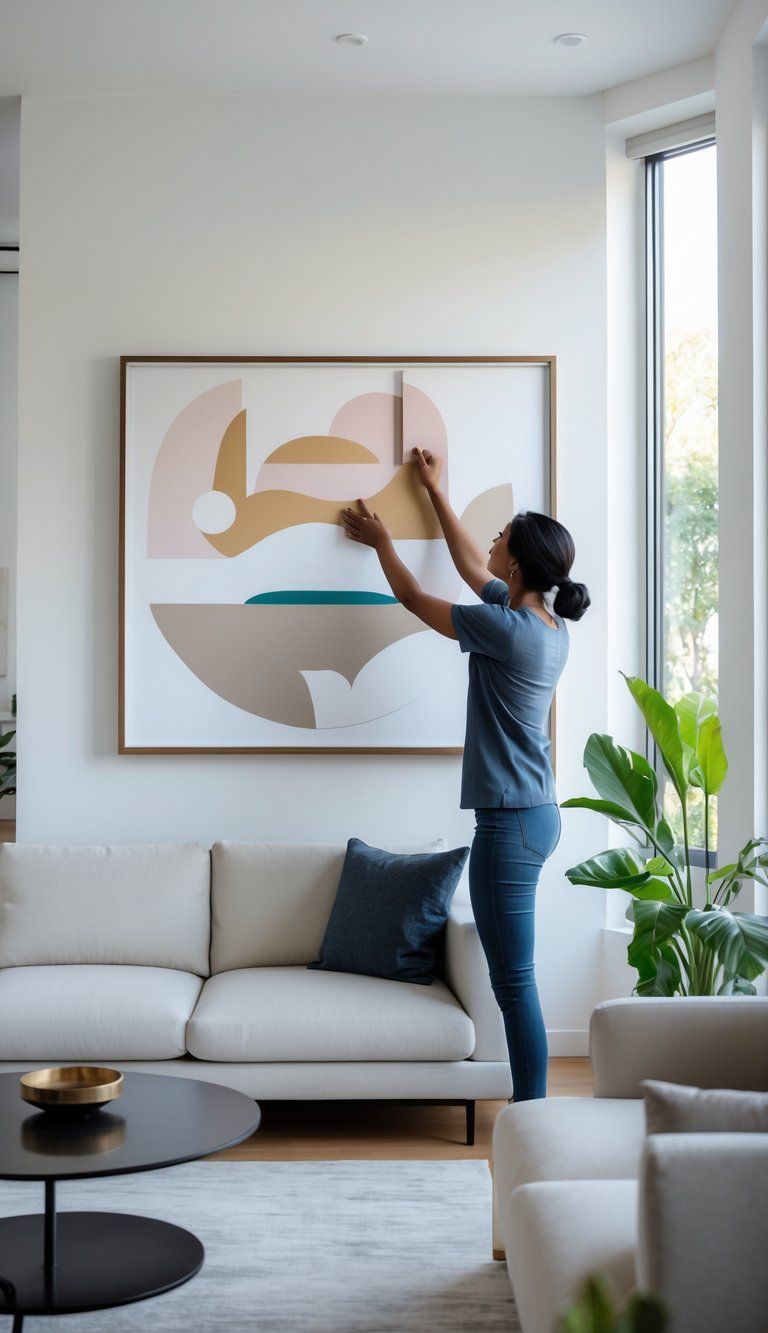
Start your art search by thinking about the scale and proportion of your walls. A big piece can make a statement above a sofa, while a gallery wall might look better along a staircase or hallway.
Check how the colors and themes in the artwork play off your room’s palette and furnishings.
Art needs to speak to you, but it also should fit with your overall design. Landscapes can bring a sense of calm to a neutral room. Abstract pieces inject energy into minimal spaces. Family photos add warmth to transitional areas.
The perfect piece doesn’t just fill a gap—it completes your room by adding that last bit of your home’s story.
Understanding the Role of Art in Interior Design
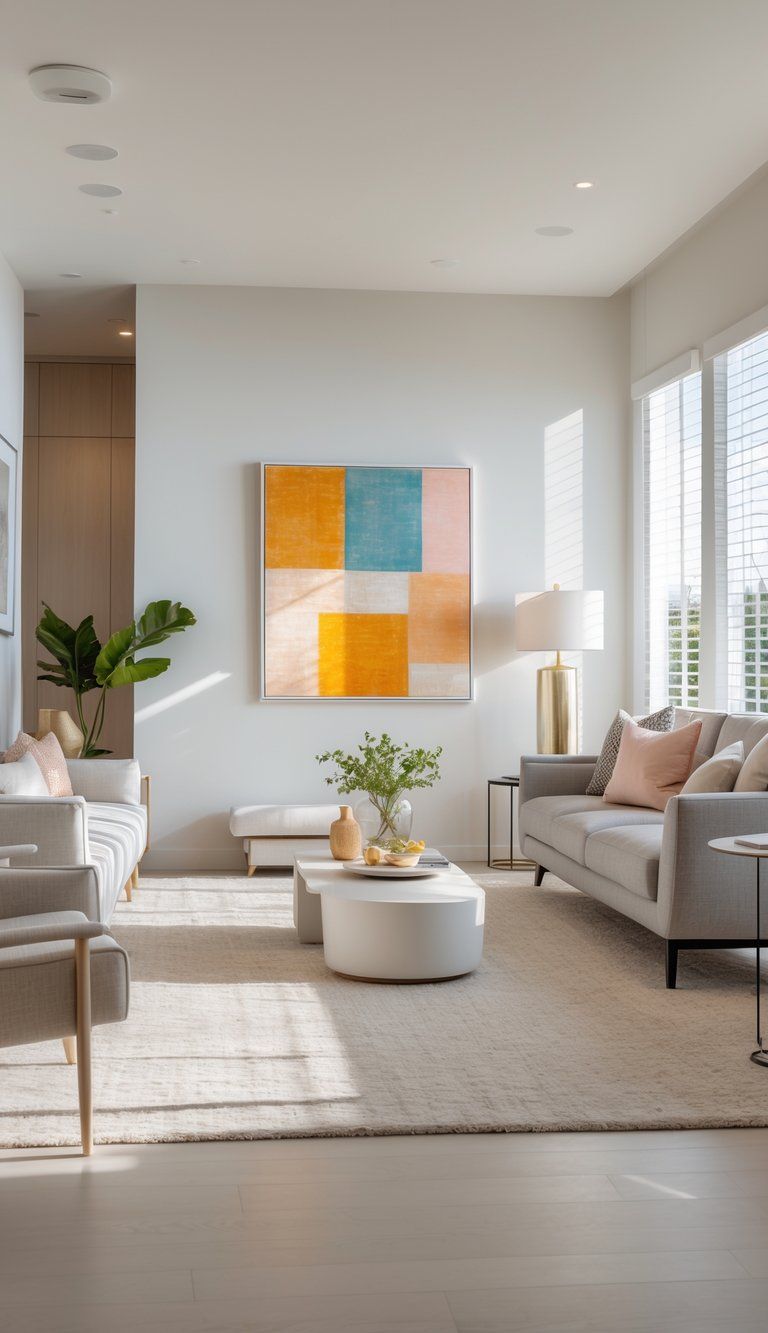
Art does way more than just decorate a wall. It breathes life into your space.
When you choose artwork thoughtfully, it can take a room from plain to extraordinary by adding depth and personality.
Art as a Focal Point
A well-placed piece of art instantly grabs attention and anchors your room. This matters a lot in spaces that don’t have architectural features like fireplaces.
A big, bold painting above a sofa naturally becomes the focal point in your living room. Try to pick artwork that’s about two-thirds the width of the furniture below it.
Statement pieces shine in minimalist rooms where nothing else distracts from them. Hang your main artwork at eye level—roughly 57 to 60 inches from the floor to the center.
In open-concept spaces, art helps define different areas without needing walls.
Balancing Room Function and Aesthetics
Pick art that fits both how you use the room and the design you have going.
In bedrooms, calming pieces help you relax. For social spots like kitchens or dining rooms, go for vibrant, energetic art.
Think about your room’s color palette when choosing art. You can:
- Pull accent colors from your furniture
- Add contrast to your wall color
- Tie together different elements in the room
Scale is important. A tiny print disappears on a large wall, while something huge can swamp a small space.
The Impact of Art on Mood and Personality
Art has a big influence on your mood at home. The colors, subjects, and styles you choose shape how you feel in a space.
Blues and greens tend to calm things down. Reds and oranges bring energy. Abstract art might spark creativity, while landscapes make things feel peaceful.
Your art collection tells your story. Pick pieces that mean something to you, not just what matches your sofa.
Art that reflects your travels, interests, or values makes your space feel personal. This connection turns decoration into something meaningful.
Don’t worry about mixing styles or periods if they speak to you. Your authentic choices will make your space feel genuine and welcoming.
Defining Your Personal Art Style
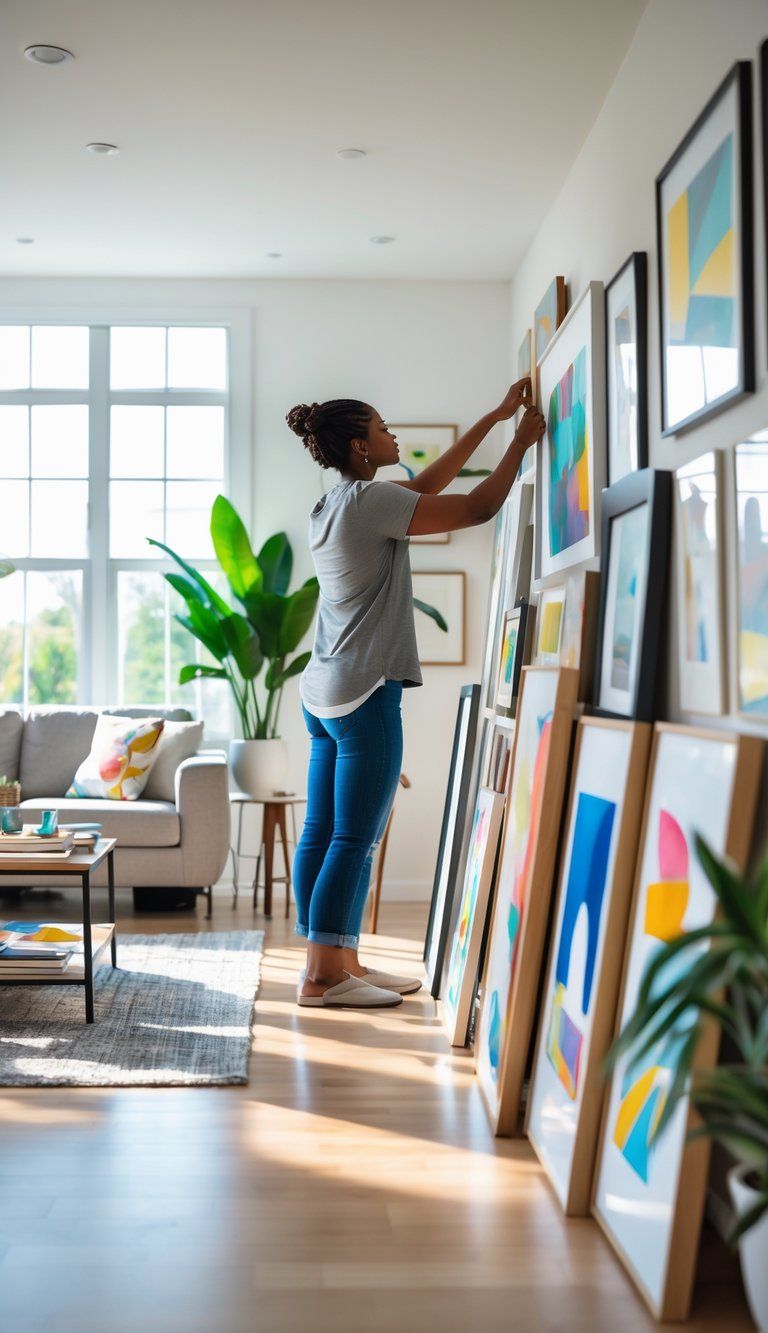
Finding art that truly resonates with you is key to creating a space that feels like home. Your choices should show who you are, not just what goes with your sofa.
Identifying Your Personal Taste
Pay attention to what catches your eye. Notice which pieces make you stop and look, whether you’re browsing online or walking through a gallery.
Ask yourself:
- Which colors do you always gravitate toward?
- Do you like realistic images or abstract ones?
- Are you into bold statements or more subtle pieces?
- What emotions do you want your space to give off?
Your current decor can give you clues. Minimalist furniture? You might enjoy clean-lined modern art. Love vintage finds? Traditional or folk art could be a great match.
Trust your gut. The art you pick should make you feel good—joy, calm, inspiration, whatever works for you.
Exploring Different Art Styles
Art comes in all sorts of styles, and each one brings something different to your space.
Some popular styles:
- Modern: Clean lines, minimal designs, bold colors
- Abstract: Shapes and colors, not literal images
- Impressionist: Light-filled, soft scenes, visible brushstrokes
- Contemporary: Current trends, sometimes with a message
- Traditional: Classic, realistic representations
Don’t box yourself into one style. Mixing things up often creates the most interesting look.
Try visiting local galleries or art fairs. Seeing pieces in person can help you figure out what really grabs you, beyond just scrolling online.
Embracing Abstract, Modern, and Vintage Art
Abstract art fits perfectly in minimalist rooms or anywhere that needs a strong focal point. Its open-ended nature lets you find your own meaning, so it works in almost any room.
Pick abstract pieces with color palettes that complement your space. Even in neutral rooms, abstract art can add a pop of color that wakes things up.
Modern art brings a contemporary vibe with its clean look. It pairs well with mid-century furniture and sleek details. Sometimes, the simplest modern pieces make the biggest impact.
Vintage art adds a sense of history and character. Antique botanical prints, old maps, or retro ads all bring warmth and a story to newer spaces.
Mix these styles thoughtfully. The best collections usually grow over time as you find new pieces that speak to you.
Determining the Right Artwork Size and Placement
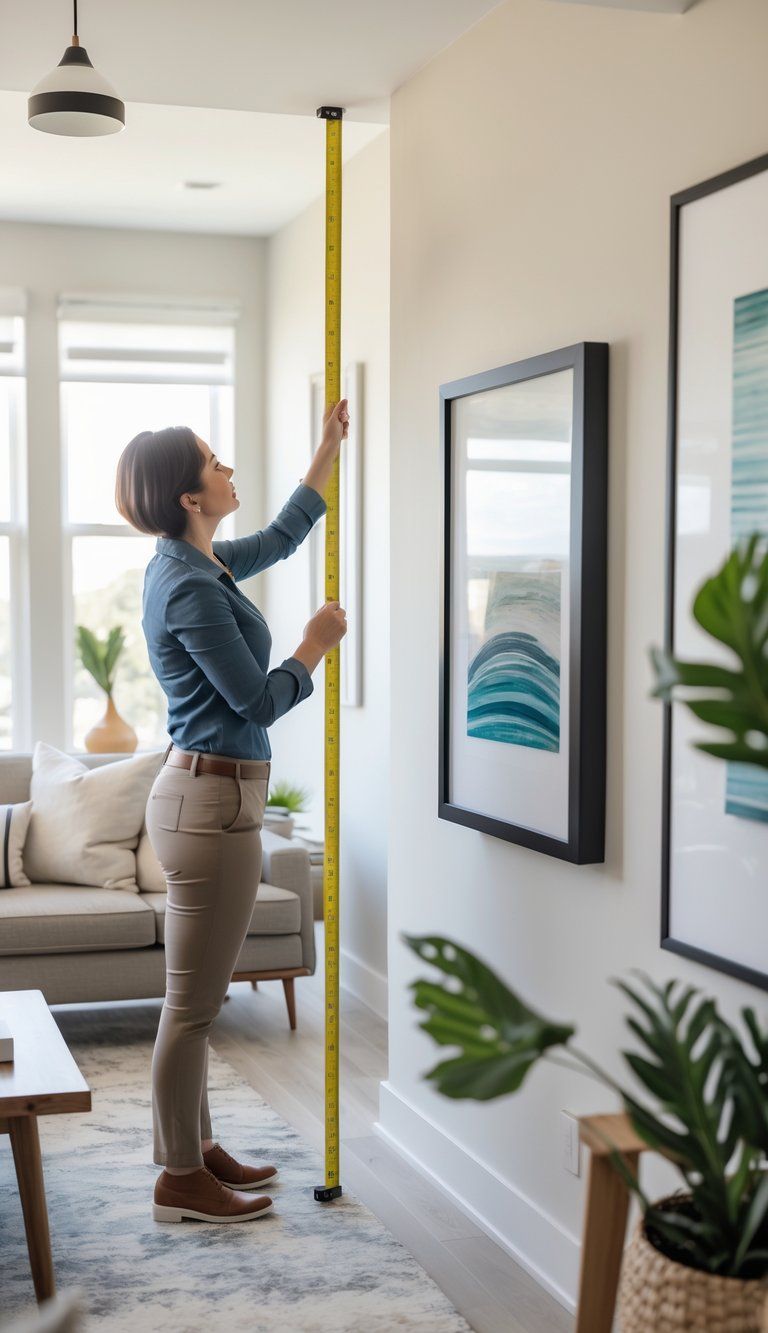
Getting the size and placement right is crucial for a balanced, inviting space. The right proportions and positioning can totally change a room’s vibe.
How to Choose Wall Art Size
Match your artwork’s size to your wall. Generally, art should take up about 60-75% of your available wall space.
To figure out the ideal size, multiply your wall’s width by 0.57 for the minimum and by 0.75 for the maximum.
So, if your wall is 48 inches wide:
- Minimum: 48 × 0.57 = 27 inches
- Maximum: 48 × 0.75 = 36 inches
Keep your artwork between 27 and 36 inches for good proportion.
When hanging art above furniture, aim for pieces that are about two-thirds to three-quarters the width of what’s underneath. This creates visual balance and keeps things from looking off.
Large Art vs. Gallery Walls
Big statement pieces make a bold impact and can actually simplify your decorating decisions. They stand out and often require less fuss than arranging lots of smaller works.
Gallery walls give you flexibility and let your collection grow. They work especially well in:
- Hallways
- Staircases
- Big empty walls
- Personal spaces like home offices
A few gallery wall tips:
- Stick to a consistent theme or color palette
- Mix up frame sizes and orientations
- Keep the space between frames even (usually 2-3 inches)
- Lay everything out on the floor before committing to nails
Both options work—just go with what fits your space, style, and the mood you want.
Consistent Spacing and Art Arrangement
Proper placement brings harmony to your space. Hang your artwork so the center sits at eye level, about 57-60 inches from the floor.
If you’re hanging art above furniture, leave 6-8 inches between the top of the furniture and the bottom of the art. This gives breathing room but keeps things connected.
For multiple pieces, keep the spacing even. Try these arrangements for different effects:
- Symmetrical: Balanced on both sides—classic and formal
- Grid: Rows and columns with even spacing—modern and tidy
- Salon-style: Varied pieces with consistent gaps—eclectic and personal
Use painter’s tape to mark out where you’ll hang things before making holes. It’s a small step, but it saves your walls and helps you get it right.
Coordinating Art with Your Room’s Color Palette
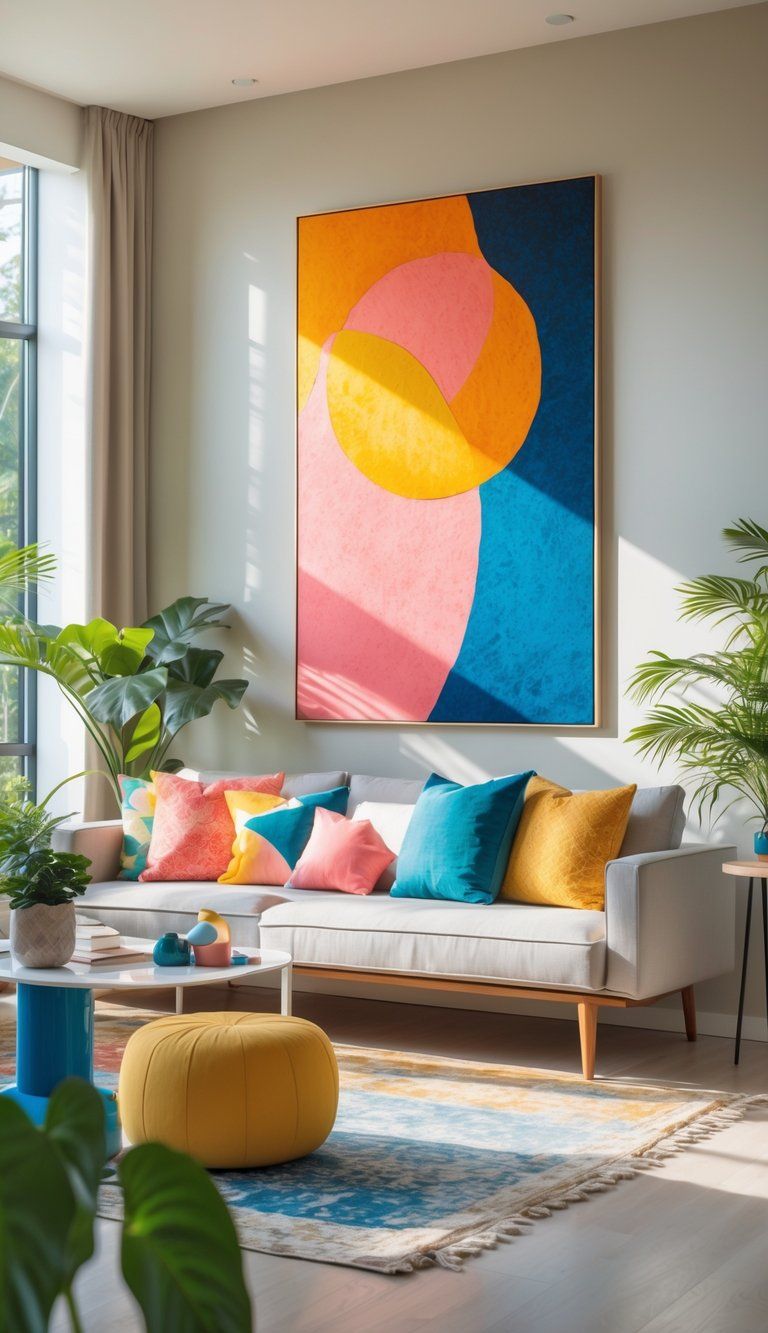
Color is the backbone of picking art. When your art’s colors work with your room, everything just feels more put together.
Complementary Colors and Muted Tones
Start by looking at your color scheme. What colors pop up in your furniture, walls, and decor? That’s your base.
For a cohesive look, pick art that includes at least one color already in your room. This makes the art feel like it belongs.
If you want more contrast, use the color wheel. Opposite colors—like blue and orange—bring energy when paired. This is great for living rooms or creative spaces.
In bedrooms or calmer rooms, muted tones work best. Soft versions of colors create a peaceful vibe without overwhelming everything.
Quick Tip: Snap a photo of your room and keep it handy when shopping for art. It really helps you picture how things will look together.
Creating a Cohesive Look with Art
Art doesn’t have to match your room exactly, but it should feel intentional. Think of it like a conversation between your art and your other decor.
One trick: pick a dominant color from your room and find art that uses it as an accent. This creates a subtle, designed feel.
When hanging multiple pieces, keep a consistent style or color theme. They don’t need to be identical, but they should relate visually.
Decide on the mood you want. Bold, high-contrast art brings energy, while pieces in similar tones to your walls make things feel calm.
Frames can help tie art into your decor. Black frames give a modern edge, while wood tones add warmth and connect to nature.
Using Prints and Photography
Prints and photography are affordable ways to bring color harmony to your walls. Look for images that work with your palette and add interest.
Black and white photos fit almost anywhere. They add a bit of sophistication without clashing with your colors. Try a colored mat or frame to connect them to your room.
For colorful rooms, choose prints with similar shades but different intensities. This adds depth without things getting too busy. In neutral rooms, a vibrant print can become the perfect focal point.
Nature photography usually blends well with most spaces. Beach scenes work with blues and neutrals; forest images pair nicely with greens and earthy tones.
Mix up print sizes and orientations for a more interesting look. A big statement piece next to smaller prints creates a dynamic arrangement but still keeps the color harmony going.
Making Art Selection Intentional and Meaningful
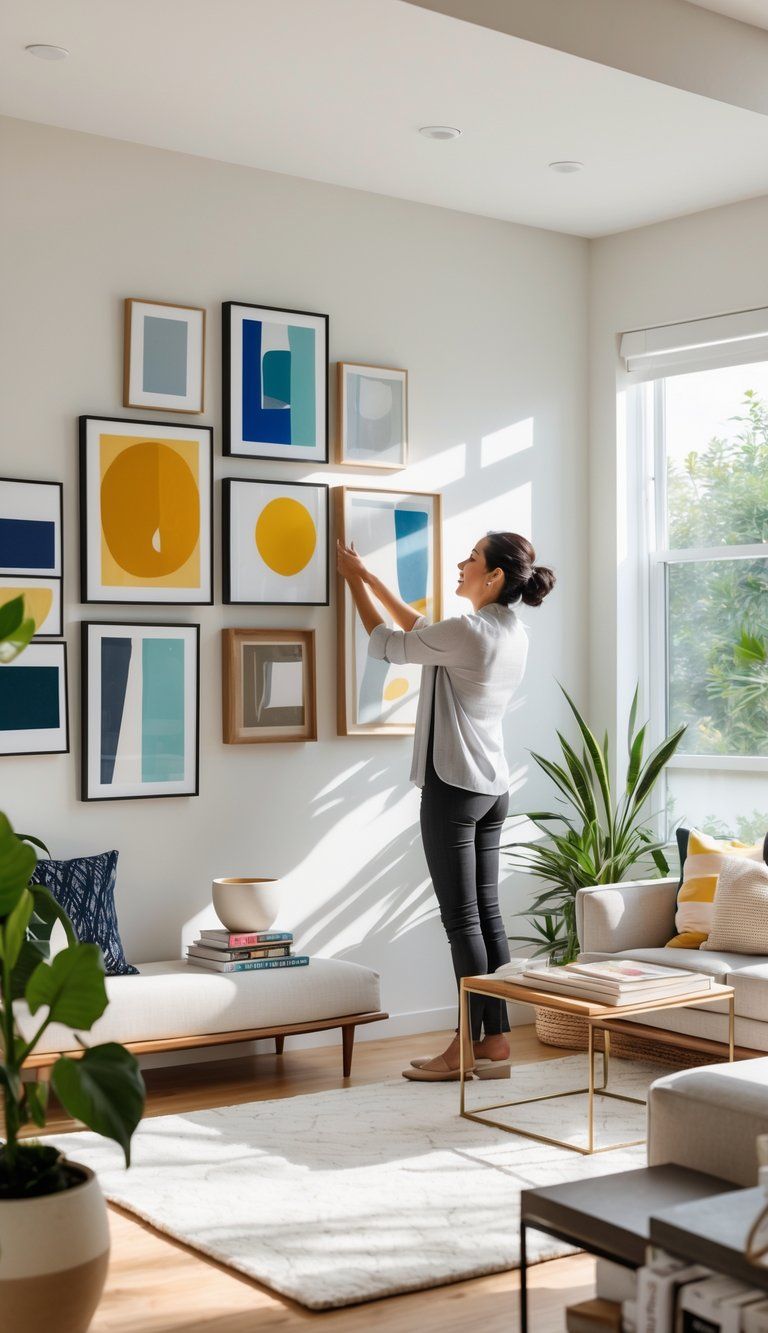
When you choose art with intention, your space shifts from just decorated to truly personal. The right pieces do more than fill blank walls—they tell your story and spark real emotional connections at home.
Selecting Statement Pieces
Statement pieces grab attention and anchor a room right away. Go for art that immediately draws your eye as you walk in. Maybe that’s a huge painting, a striking sculpture, or just a quirky photograph.
Think about scale before you commit. A tiny piece on a big wall just disappears, while something massive in a small space can feel suffocating. Aim for a statement piece that covers about 60-75% of your wall space.
Pick art that gets people talking. The most memorable pieces usually stir up some emotion or curiosity. They don’t have to match your decor exactly—sometimes a bold clash makes things much more interesting.
Lighting matters a lot here. Try installing picture lights or even adjustable track lighting to really let your art shine.
Reflecting Personal Style
Let your art reflect you, not just the latest trends. Pick pieces that actually mean something to you—whether that’s tied to your experiences, values, or just your favorite colors.
Start by figuring out what themes matter most to you. Do you love to travel? Maybe maps, landscapes, or travel photos fit your vibe. Drawn to certain colors? Look for art that leans into your favorite shades.
Don’t rush the process. Live with temporary prints or budget-friendly options before you splurge on something big. Some galleries even let you “try before you buy,” which is pretty helpful.
Family photos can totally count as art if you display them with care. Try mixing personal photos with professional art on a gallery wall for a collection that feels uniquely yours.
Go with your gut. If a piece just clicks with you, chances are it’ll keep making you smile long after trends move on.
Curating an Art Collection
Building a solid art collection takes time. Start with pieces you love, then slowly add others that work together.
Think about a theme that ties things together. This could be a color palette, a certain medium, a subject, or even a specific time period. A loose theme helps your collection feel cohesive without making everything matchy-matchy.
Mix up different types of art to keep things interesting. Combine paintings, prints, photos, and even 3D pieces. Playing with different textures and materials keeps your collection feeling fresh.
Look for art in unexpected places. Student shows, estate sales, and local fairs often have unique pieces with cool stories—and they’re often way more affordable.
Keep track of what you collect. Jot down the artist, when you bought it, and any story behind the piece. These little details add character and become part of your home’s history.
Considering Lighting and Room Elements
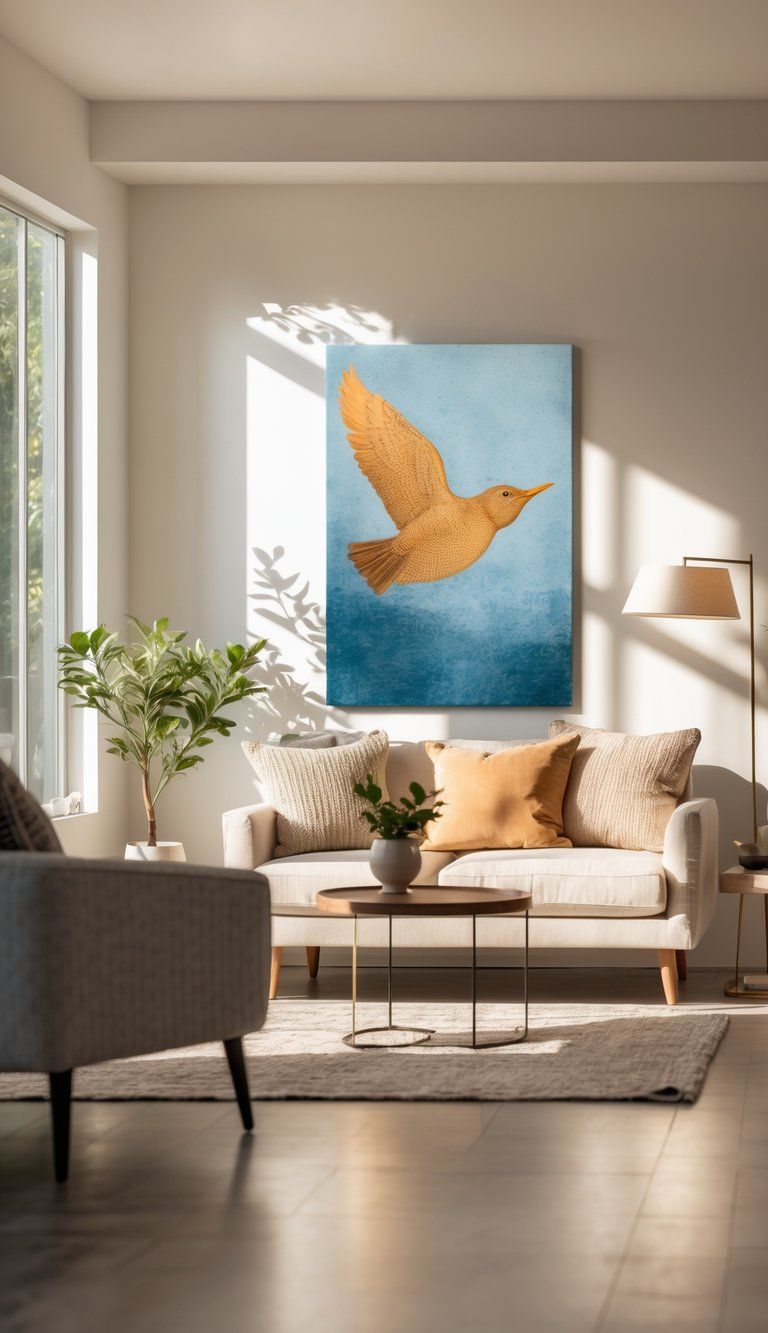
Your art and your room should work together, not fight for attention. The right lighting and room elements can completely change how your artwork looks and feels.
Maximizing Art Impact with Lighting
Good lighting makes art pop. Natural light is usually great, but watch out—direct sun can fade or damage artwork over time.
Try these lighting ideas:
- Track lighting: Moveable spotlights to highlight specific pieces.
- Picture lights: Small lamps mounted above or on the frame.
- Wall sconces: Add a soft glow that works well with art.
The distance between your lights and the art matters. Keep lights about 30 inches from the wall to avoid harsh shadows and glare.
In living rooms, dimmable lights let you tweak the mood depending on the time of day or what you’re doing.
Integrating Art with Existing Decor
Your artwork should feel like it belongs with your furniture and decor, not like an afterthought. Look at your room’s colors, textures, and style before you hang anything.
Art doesn’t have to match your space perfectly. Instead, try these tricks:
- Complementary colors: Pick art that echoes colors you already have, even in small accents.
- Contrasting styles: A modern piece can actually look amazing in a more classic room.
- Unifying elements: Choose art that shares a mood, theme, or texture with your space.
Think about what the room is for. In living rooms, pick art that fits the vibe—whether that’s relaxing, entertaining, or sparking conversation.
Pay attention to furniture scale. A big sofa needs either a large piece of art or a well-arranged group of smaller works to keep things balanced.
Expert Tips for Creating a Balanced Art Display
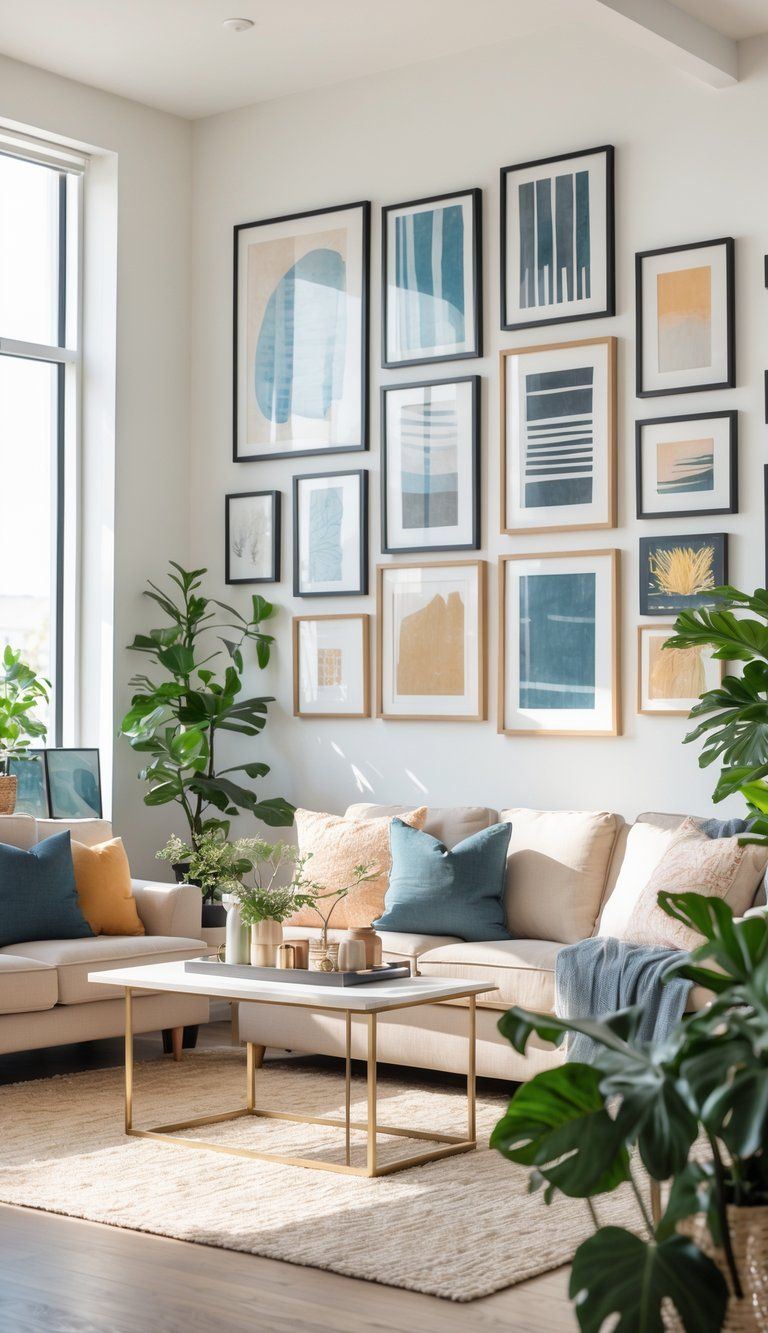
Creating balance in your art display is about more than just hanging pictures. You’re aiming for harmony between different pieces while making the whole room feel right.
Mixing Different Art Styles
Don’t stress about mixing art styles. Sometimes a sleek photo next to a vintage oil painting just works. The trick is to find a common thread—maybe it’s a color, a theme, or even the type of frame.
Try the “rule of odd numbers” when grouping art. Arrangements of 3, 5, or 7 pieces usually look more lively and less stiff than even numbers.
Think about scale and proportion. Pair a big statement piece with smaller works to keep things visually interesting. A large canvas can anchor your display, while smaller pieces add layers and detail.
Color coordination doesn’t mean everything has to match. Look for colors that complement or contrast in a way that feels good with the rest of your room.
Avoiding Common Art Placement Mistakes
People often hang art way too high. Try placing the center of your artwork at eye level—somewhere around 57 to 60 inches from the floor.
It just feels better to look at art without craning your neck, doesn’t it?
Don’t forget about lighting. Good artwork deserves to be seen, so think about using track lights, LED strips, or even a picture light.
Lighting can really make your favorite pieces pop.
Size really does matter here. If you hang a tiny painting on a huge wall, it just looks lost. On the other hand, an oversized piece can overwhelm a small space.
Give each piece some space to breathe. When you cram too many artworks together, the whole display ends up looking cluttered.
Think about what the room is for and how people move through it. In busy areas, secure your art well and pick spots where it won’t get bumped or knocked down.

